
Your Summer Gardening Checklist: How to Keep the Bounty Coming all Season
Peak gardening season is finally here! Here’s what to do wherever you are in the West.
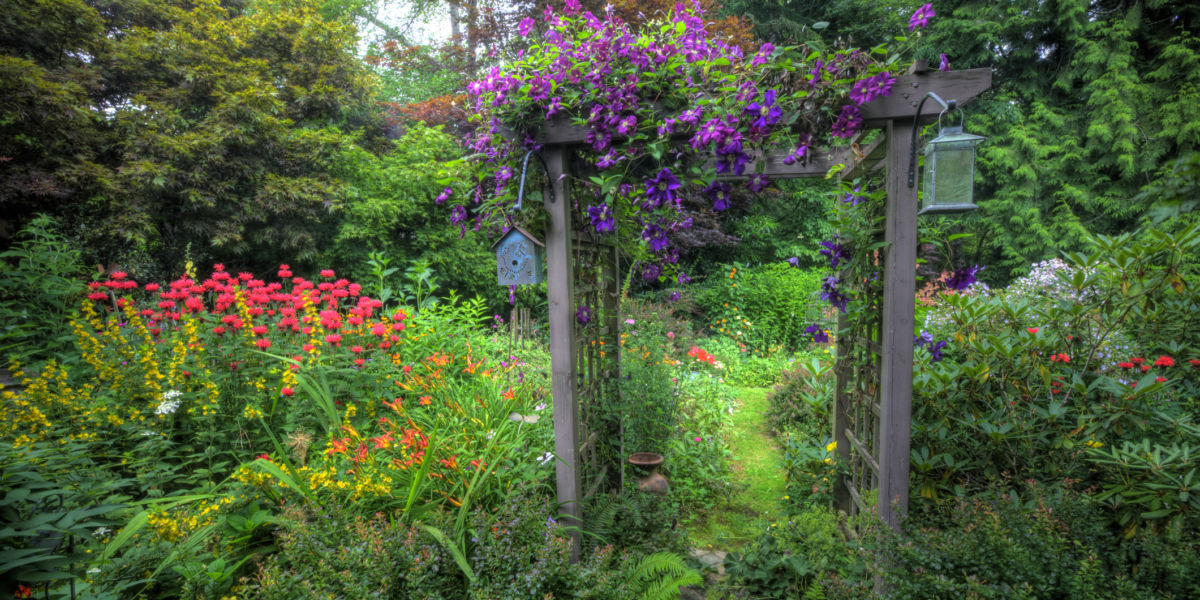
Find Your Region
All Regions
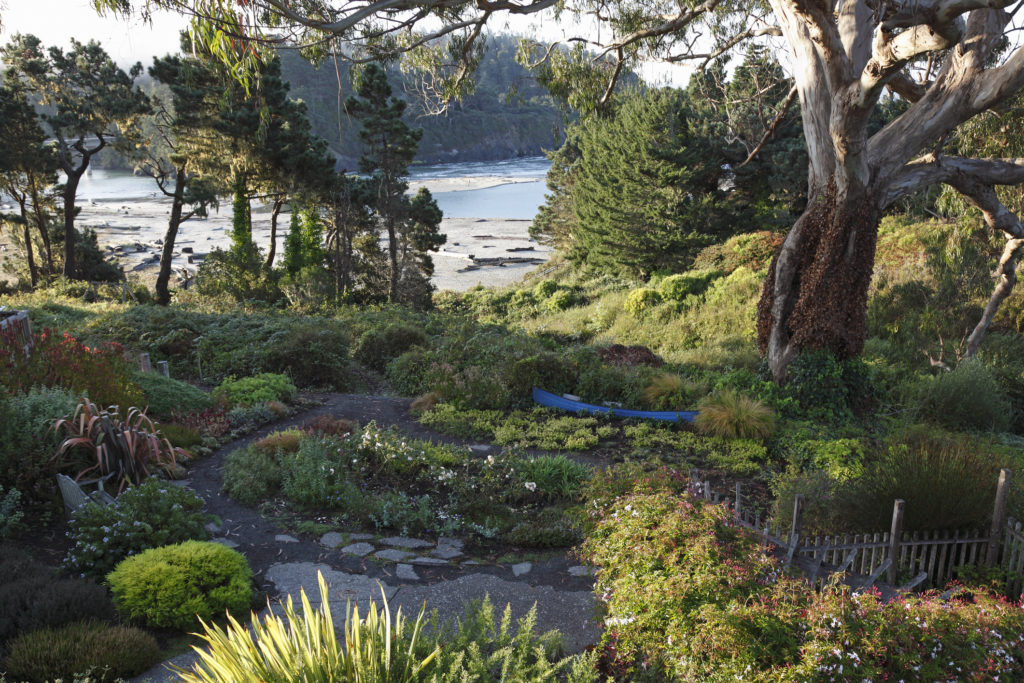
constantgardener/Getty Images
Plant
To extend the harvest, plant seedlings and seeds of the same vegetable (broccoli or lettuce, for example) on the same day.
Maintain
Before adding plant waste to the compost pile, chop it up—or run over it with your power mower—to speed decomposition.
Prune deciduous fruit trees as soon as they are done fruiting, to help keep trees smaller and fruit within reach.
When planting annuals, pinch or prune off flowers and buds to direct all initial growth to the roots and help avoid transplant shock.
Protect
Spread a thick blanket of straw between plants in vegetable gardens to help prevent weeds and slow moisture loss.
Water and turn the compost pile. It decomposes quickly in hot weather.
Take preventive measures to protect your home from fires: Remove dead limbs and leaves from trees and shrubs. Cut tall grasses and weeds down to stubble. Clear gutters of debris.
Throw insect- and disease-damaged plants in the trash—using them as compost or mulch can spread the problem to the rest of your garden.
Watch for signs of heat stress in plants. Fruit trees and bush vegetables (such as bell peppers and
eggplants) drop leaves when stressed. To give them relief, provide even soil moisture through more regular watering, and shade beds from afternoon sun.
Harvest
Harvest herbs in the morning, before their oils dissipate.
Mountain
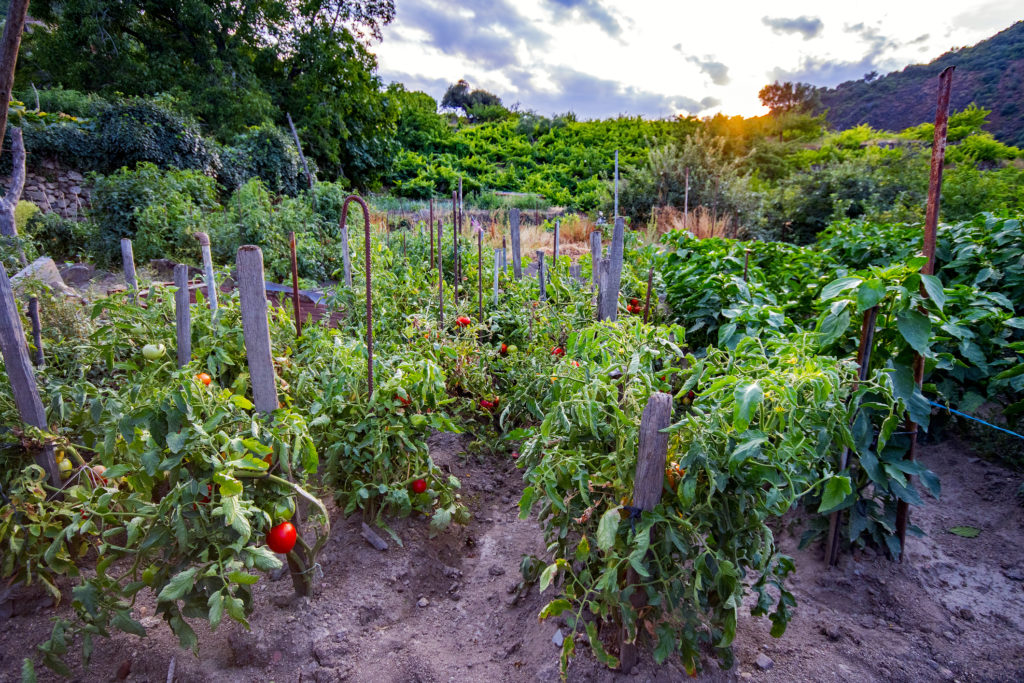
miguelangelortega/Getty Images
Plant
Grow lemongrass for cooking. Root fresh stalks in a glass of water, then plant outside into a container at least 16 inches wide. Lemongrass prefers moist soil and monthly fertilization.
Set out seedlings of cucumbers, eggplant, melons, peppers, pumpkins, tomatoes, and squash. Sow seeds of beans and sweet corn.
Maintain
Thin apples to 6 inches apart when they reach the size of large grapes.
Pinch the tips of asters, chrysanthemums, and other fall-blooming perennials one last time at mid-month.
When perennials like coreopsis, Shasta daisy, and yarrow sport more leaves and stems than flowers, prune all parts down to within a few inches of the ground, leaving any new foliage at the base of the plant. Keep the soil moist until strong new growth appears, and many of these flowers will bloom again later in the season.
Apply extra water to brown patches in lawns, but do so only after making certain with a moisture meter that the soil is dry. Bluegrass tends to go dormant in extreme heat, and overwatering a dormant lawn can cause fungal infections.
Protect
Rose curculios and rose midges may cause everblooming roses to drop their buds before they open. To control these insect pests, regularly prune off and destroy any buds that don’t unfurl properly.
Prevent corn earworms from damaging sweet corn by applying a few drops of mineral oil onto the silks as soon as they emerge. If you discover these caterpillars burrowing into your peppers or tomatoes, spray them with a product that contains Bacillus thuringiensis (Bt); make sure it is labeled for use on vegetables.
Too much water during high temperatures fosters fungal diseases. Check the soil with a screwdriver. If it goes into the soil easily and the blade feels damp and cool to the touch, there is no need to water yet.
Harvest
Pick yellow summer squash and zucchini when they reach 5 to 6 inches long. For stuffing, salads, and stir-fries, collect squash flowers in the morning when they are fully open.
Northern California
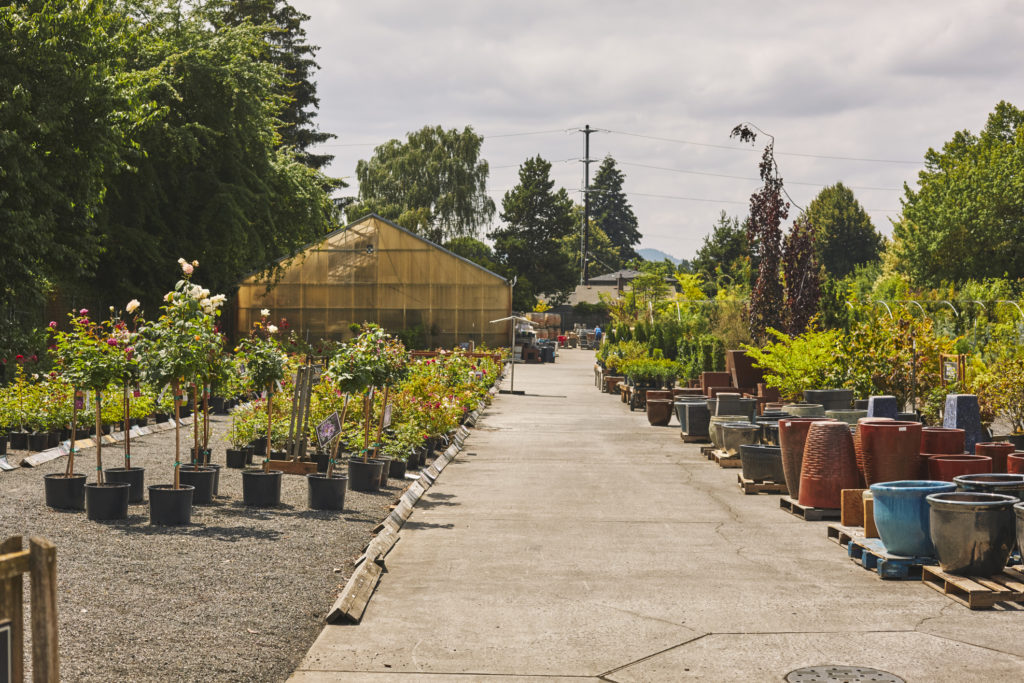
EyeWolf/Getty Images
Plant
For a steady supply of basil all season, plant seedlings every three to four weeks. Grow in full sun, water regularly, and pinch off flowers for bushier growth.
Sow cool-season crops such as broccoli, cabbage, carrots, and cauliflower in July.
Instead of thirsty annuals, use colorful low-water plants along a border. One of our favorite combos: powder blue Euphorbia ‘Blue Haze’, lime green Carex oshimensis ‘Everillo,’ and compact succulents.
Maintain
Don’t panic if you find a swarm of bees in your yard this time of year—they are usually docile and leave after a few days. You can also call your county’s Master Gardener hotline for names of beekeepers who will come and get them.
Irrigate fruit trees, citrus, and flowering trees deeply every other week (or weekly in hot inland climates). Water less-thirsty trees (like Arbutus ‘Marina,’ carob, and Chinese pistache) about once a month.
Pinch back basil plants often to discourage flowers from forming and to keep plants compact.
Protect
Since earwigs are active at night, in the evening place moistened, rolled-up newspapers in various spots to attract them, tossing them out in the morning.
Keep leaves of cucumber, melon, and squash dry to stave off powdery mildew.
Harvest
Pick beans and squash frequently to encourage production.
Cut artichokes when flower buds (the part you eat) reach full size but before bracts begin to spread open. Leave 1½ inches of stem—it has a flavor similar to the artichoke heart once cooked.
Northwest
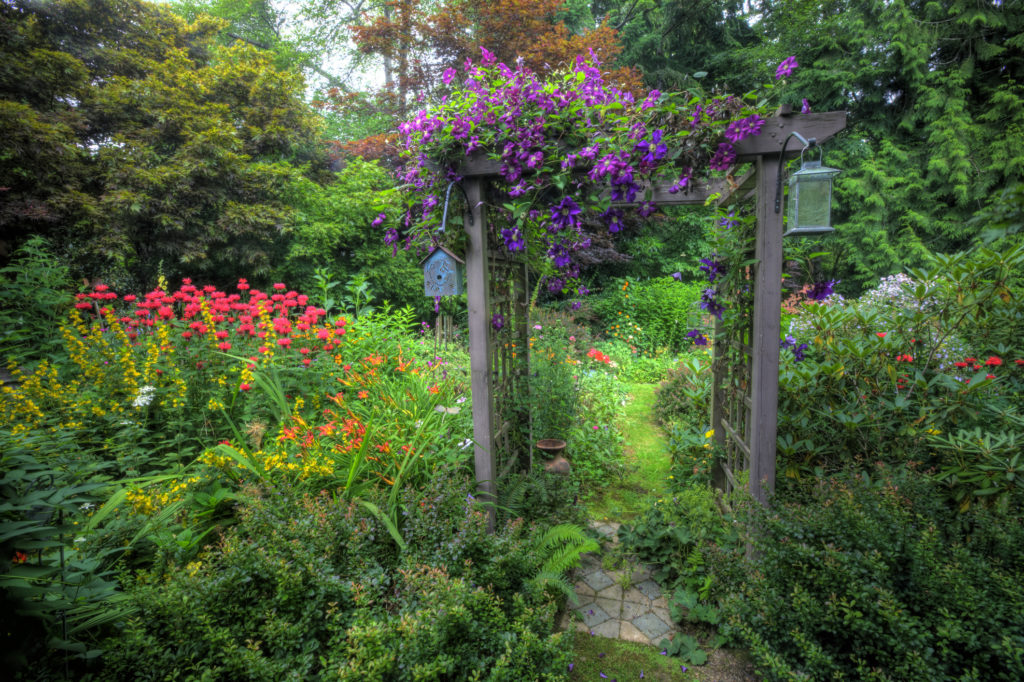
Darrell Gulin/Getty Images
Plant
Sow beans directly in the garden, and set out seedlings of corn, cucumbers, eggplant, melons, peppers, squash, and tomatoes early in June.
For winter harvest, directly sow beets, broccoli, bush beans, carrots, chard, Chinese cabbage, kohlrabi, lettuce, peas, radishes, scallions, spinach, and turnips in July.
In July, start planting beds with fall and winter vegetables such as beans, peas, and root and leaf crops (especially members of the cabbage family).
Maintain
Keep a phenology journal: Track (and eventually connect) weather, insect and bird populations, and flowering and fruiting dates in the garden.
Weeding and watering are early summer’s main tasks. Monitor your drip systems, hand water, and allot around 20 minutes a day to weeding for a picture-perfect garden.
Hoe weed seedlings on a dry, clear morning, and the sun will kill their tiny roots by evening. Water deeply before you pull mature weeds, whose taproots come out of damp soil more easily than dry soil.
Many apple varieties are alternate bearers—heavy one year, light the next. To balance this, hand-thin fruits in heavy years after June drop (natural self-thinning). Thin double clusters to singles, and triples to doubles.
Protect
Prevent wormy apples by treating trees with spinosad, an organic control, available at nurseries.
Azalea lace bugs, relatively new to the Northwest, whiten leaves of azalea, Japanese andromeda (Pieris), and rhododendron by feeding on the leaves. Damage first appears in late May to early June and gets worse throughout the summer. Keep plants well watered and spray with horticultural oil, neem oil, or insecticidal soap.
Check houseplants for aphids, mealybugs, mites, and scale insects. In a shaded spot outdoors, hose off dusty leaves and treat with spray-on or systemic pesticide.
Southern California

Catherine Ledner/Getty Images
Plant
Continue planting seedlings for summer fruits and vegetables, including cucumber, eggplant, melons, and tomatoes.
Plant summer annuals from seed or seedling: Blanket flower (Gaillardia), calendula, marigold, Mexican hat (Ratibida columnifera), and zinnia are all good picks.
In July, start one last crop of basil from seed. In mild-climate areas, it will take you into winter.
Maintain
Along the coast, water early in the day to keep leaves dry during the overcast, humid days of June; wet leaves are vulnerable to fungal diseases like powdery mildew.
Resist the urge to over-irrigate established natives and other Mediterranean-climate plants. They have evolved to survive long, hot dry periods.
Finish pruning citrus trees for size and shape. Remove crossing or dead branches, cutting out entire limbs rather than making cuts at the tips, as that results in excessive new growth.
Protect
Weave tomato branches back into their cages to keep fruit from rotting on the ground, and pick off tomato hornworms as you see them.
Pinch back dahlias, fuchsias, gaillardias, penstemons, and salvias to encourage repeat blooming. Straw mulch helps keep soil moisture consistent.
Treat powdery-mildew-affected plants by mixing 1 tablespoon each of baking soda and horticultural oil in a gallon of water. Avoid spraying on days when temps exceed 85°.
Harvest
If you’re drowning in tomatoes, rinse and dry the extras, place them in a resealable plastic bag, and freeze them.
Southwest
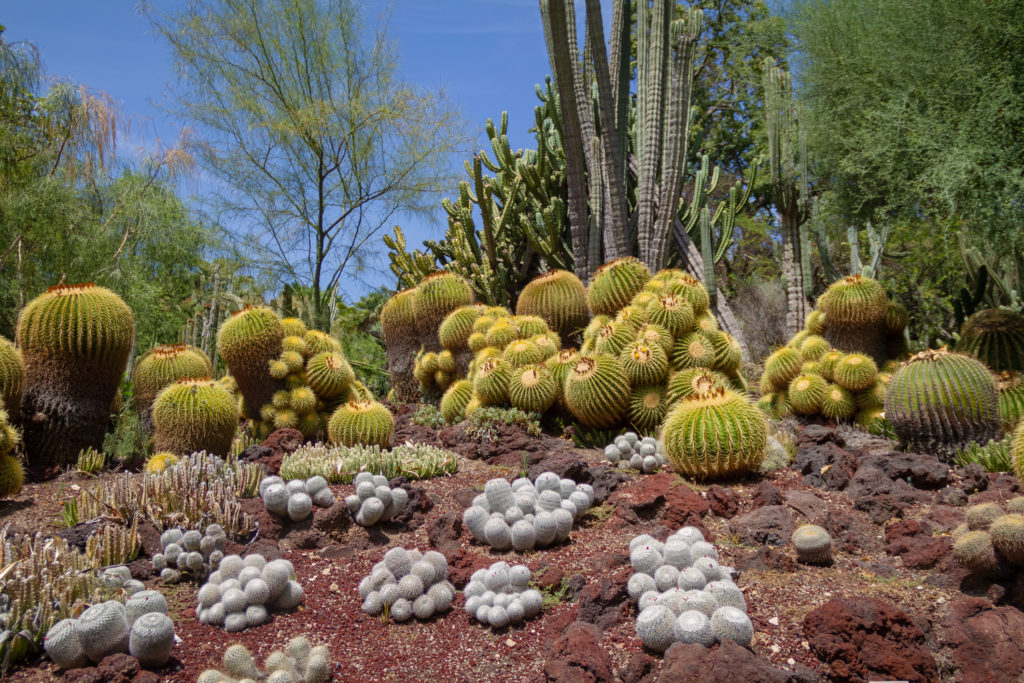
Sara Edwards/Getty Images
Plant
Lure butterflies and hummingbirds to your garden by planting ‘Hot Lips’ sage, an evergreen shrub that produces red-and-white flowers throughout the summer.
Before summer storms arrive, sow seeds of black-eyed peas, chilies, corn, eggplant, summer and winter squash, and tepary beans.
For showy flowers that entice you to stay outside longer, plant a night-blooming cactus garden. Try the Andes organ pipe (Cereus hildmannianus), Arizona queen of the night (Peniocereus greggii), or queen of the night (Harrisia bonplandii).
Early in July, set out containerized figs. If you’re adding more, consider dark purple–skinned ‘Black Mission,’ one of the most reliable and productive varieties for low-desert gardens.
Maintain
As high summer heat arrives, reduce or cease fertilizing most plants. Exceptions include potted plants, summer annuals, agaves, cactus, and actively growing Bermuda lawns.
Give your houseplants a summer vacation outdoors. Place plants such as dracaena, Sansevieria varieties, and ficus trees under covered patios and other shaded spots.
Prune up to 25 percent of the canopies of trees prone to wind damage, such as South American mesquite, ‘Desert Museum’ palo verde, desert willow varieties, and Texas honey mesquite, before the onset of summer thunderstorms. Take out weak and crossing branches first, then prune for shape.
If honeybees and other pollinators are scarce in your garden, hand-pollinate plants by using a fine-tipped paintbrush to dab pollen from one flower and deposit it in an adjacent one.
Protect
Check plants for spider mites, which are common on Italian cypress as well as desert plants such as beaked yucca. Blast any fine nets of webbing on the undersides of leaves with a strong jet of water or apply insecticidal soap. Repeat until eradicated.
Keep birds and insects from eating ripening grapes with a simple organic trick: Slip kneehigh nylon stockings over clusters and fasten with twist ties. The stockings allow air and sunlight penetration.
